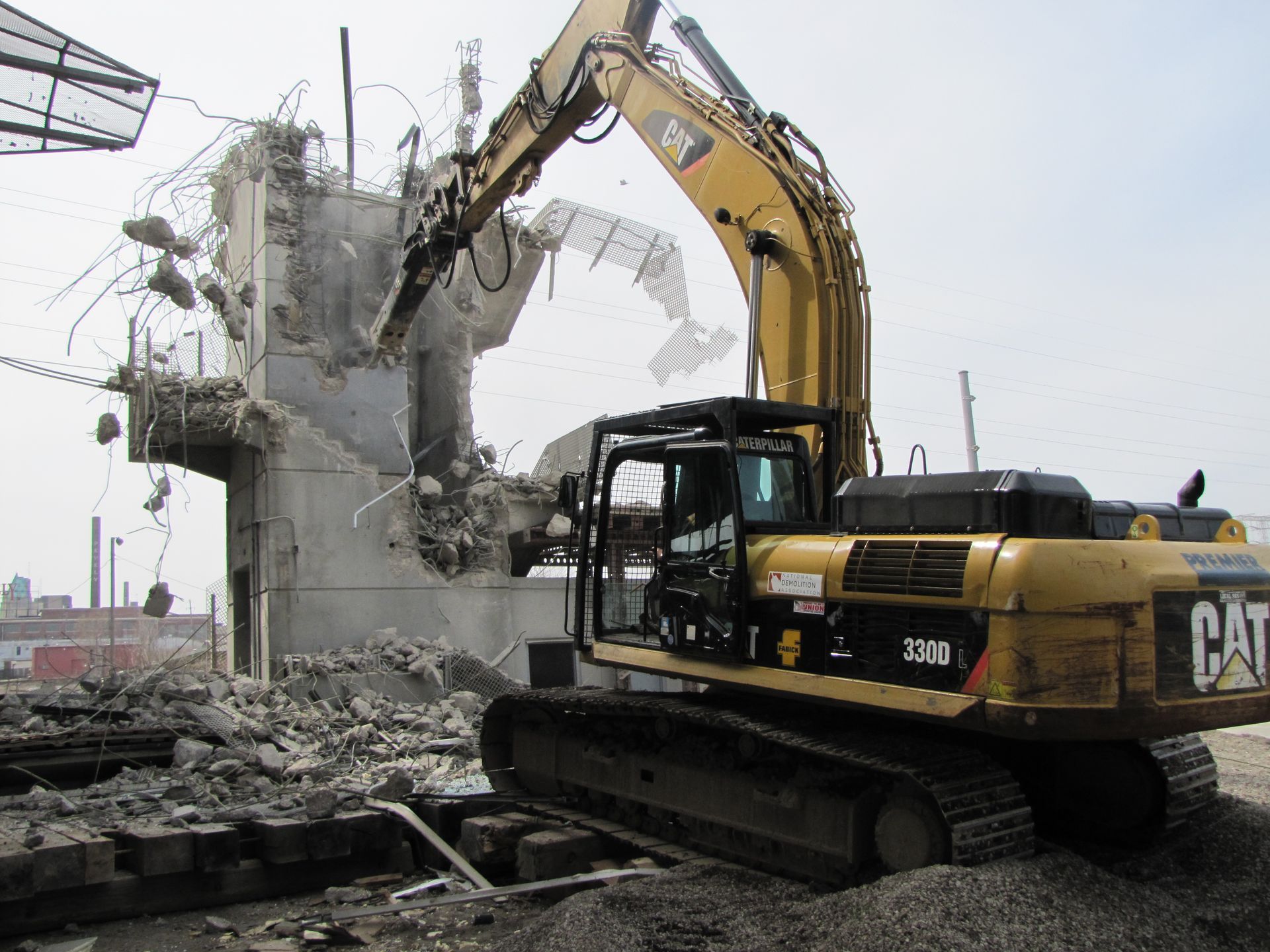
Environmental Hazards and Compliance for Retail Construction in Puerto Rico
Quick Answer:
Retail construction in Puerto Rico stays compliant when we cover the basics. We start with site due diligence, then handle NPDES stormwater controls, clean air and noise management, OSHA Hazard Communication training, lead‑safe practices, and SPCC fuel handling.
Many developers come to Puerto Rico excited to build retail spaces, only to hit obstacles like coastal exposure, steep grades, intense rain, and dense urban sites.
These challenges can quickly inflate budgets and delay openings. At DEV Builders Group, we solve this by addressing risks head‑on with compliance strategies and proven planning, so your project stays on track and your investment is protected.
Before diving into the details, here are the key environmental hazards and compliance areas every retail construction project in Puerto Rico must address to stay safe, compliant, and on schedule.
1) Start with site due diligence
Start by ordering a Phase I Environmental Site Assessment that follows the latest ASTM standards. This step ensures you meet federal requirements and uncover any hidden site risks early.
Next, review official flood maps to understand potential hazards and design building elevations accordingly. Setting finished floors and equipment pads above risk zones can prevent costly future damage.
Finally, confirm which agency has authority over stormwater discharges in Puerto Rico. Federal permits are typically required, so planning ahead avoids compliance delays and keeps projects on track.
2) Stormwater compliance and erosion control in Puerto Rico
If your project will disturb at least one acre of land, you’ll need to secure coverage under the federal construction stormwater permit.
To comply, prepare a Stormwater Pollution Prevention Plan before starting site work. File the required notice of intent, then install practical erosion and sediment controls such as silt fences, stabilized entrances, or inlet protection. Keep inspection logs after every significant rain to document performance.
When the site is fully stabilized, finish the process with a notice of termination. This step officially closes out permit coverage and confirms that long-term protections are in place.
3) Manage air quality, dust, and noise
In Puerto Rico, the Department of Natural and Environmental Resources oversees air quality standards. On construction sites, you can stay compliant by controlling dust, keep haul roads damp, cover stockpiles, and use water when cutting concrete or masonry.
Temporary generators may also require approval depending on their size and emissions. On top of that, be mindful of local noise regulations by scheduling loud work during permitted hours and maintaining proper equipment mufflers.
4) Handle hazardous materials the right way
Make sure every crew member is trained on how to handle and label chemicals safely, and keep safety sheets for all materials on site.
If the building was constructed before 1978, special lead-safe rules apply. Only certified firms can do the work, and they must follow strict practices to protect workers and occupants. Keep records of these activities as proof of compliance.
On the ground, stage spill kits where they’re easy to reach, separate different types of waste, and ensure disposal is handled through approved facilities.
5) Fuel and generators: know your SPCC triggers
If your site stores 1,320 gallons or more of fuel or oil in containers of 55 gallons or larger, additional spill-prevention rules apply.
The threshold is based on the container’s total capacity, not how much liquid it actually holds, so you need to count every drum, tote, or tank.
For underground tanks, Puerto Rico has its own approved program that takes the place of the federal system. Make sure tanks are registered and inspected under local requirements before use.
6) Turn paperwork into action
- Brief subs at kickoff and refresh training after scope changes.
- Post plan sheets at the trailer, set inspection cadences, and log fixes after each rain.
- Assign an on‑site stormwater lead and a separate hazardous‑materials lead so accountability is clear.
- Run weekly stormwater walks and fix logs within 24 hours.
7) Permitting timeline tips
Use these timing tips to keep permits and mobilization on track:
- Submit the notice of intent once design plans are about 90 percent complete and show phased grading.
- Keep the stormwater plan current as best practices or site conditions change.
- Build in extra time for rainy season delays and final stabilization.
- Size and permit temporary power sources or generators before they arrive on site.
Practical BMP checklist
Use this quick checklist to keep retail construction in Puerto Rico compliant on active sites.
- Stabilized construction entrance at the first day of earthwork.
- Silt fence trenched and toed in along down‑gradient limits.
- Inlet protection installed before cutting pavement.
- Stockpiles covered and anchored before storms.
- Perimeter berms or diversions to route clean water around the work.
- Rapid seeding, mulch, or mats on idle areas after each lift.
- Daily housekeeping to keep trash, concrete washout, and fuels contained.
Documentation that saves time
Store inspection forms, rainfall logs, delivery tickets for erosion control materials, and training rosters in one binder or shared folder.
After each rain, take photos of your site controls to document they are in place and working.
Keep vendor specifications for items like silt fence, inlet bags, and erosion blankets to verify compliance during reviews.
Common pitfalls to avoid
Avoid these frequent mistakes that delay schedules and cause citations:
- Filing the notice of intent late and starting earthwork without coverage. Inspectors can stop work immediately.
- Treating the stormwater plan as a binder only. Update maps after each phase and keep logs current.
- Undercounting oil storage by using operational volume instead of container capacity. The 55-gallon threshold applies.
- Ignoring flood zones when placing power rooms, switchgear, or fuel storage. Always build above risk levels.
- Skipping lead-safe requirements in buildings constructed before 1978. Certified methods keep crews and tenants safe.
- Missing safety data sheets, labels, or training for hazardous materials. Keep documents accessible in both English and Spanish.
- Renting oversized generators without checking local air requirements. Confirm permits before delivery.
Clear roles, routine inspections, and proper records keep retail projects in Puerto Rico compliant and on schedule.
Why owners choose DEV Builders Group
We deliver high‑end, premium, concierge, white glove service for commercial and retail builds in Puerto Rico.
We manage compliance from pre‑construction through closeout while keeping craftsmanship, schedule, and brand standards aligned.
See our focus on Commercial & Retail and how we translate brand standards into durable, beautiful spaces.
For proof at a tourism‑facing destination, explore the Ron del Barrilito Visitor Center project.
Contact us today for your next project!
Sources
- EPA 2022 Construction General Permit
- EPA stormwater construction overview
- EPA Region 2 NPDES in Puerto Rico
- Federal Register AAI and ASTM E1527-21
- EPA AAI page
- FEMA Flood Map Service Center
- DRNA Regulation for the Control of Atmospheric Pollution
- Puerto Rico Regulation for Noise Control
- OSHA Hazard Communication Standard
- EPA RRP contractor page
- EPA RRP work practices
- ECFR 40 CFR part 112 (SPCC)
- EPA 55‑gallon counting guidance
- Puerto Rico UST program approval (Federal Register)
- EPA UST programs overview
CONTACT US
READY TO BUILD A DESTINATION THAT PERFORMS?
Contact DEV Builders Group to discuss your hotel, restaurant, or venue project. We’re ready to build your vision with care, speed, and excellence.
Our Office
Calle Aldebaran | 00920 San Juan | Puerto Rico
Call Us
Investor Resources
List of Services
-
2025 Tourism Demand & RevPAR Forecast for Puerto RicoItem Link List Item 1
For construction investors, these trends signal high opportunity in tourism-related development. At DEV Builders Group, we track these indicators closely to support our clients in executing timely, high-impact hospitality projects.
-
Capital Stack Options: C-PACE, OZ, & EB-5 for Hospitality Builds in Puerto RicoItem Link List Item 2
If you're planning a hotel or resort build in Puerto Rico, understanding your capital stack is critical. At DEV Builders Group, we guide clients through every layer, from C-PACE audits to pre-construction modeling and incentive alignment.

